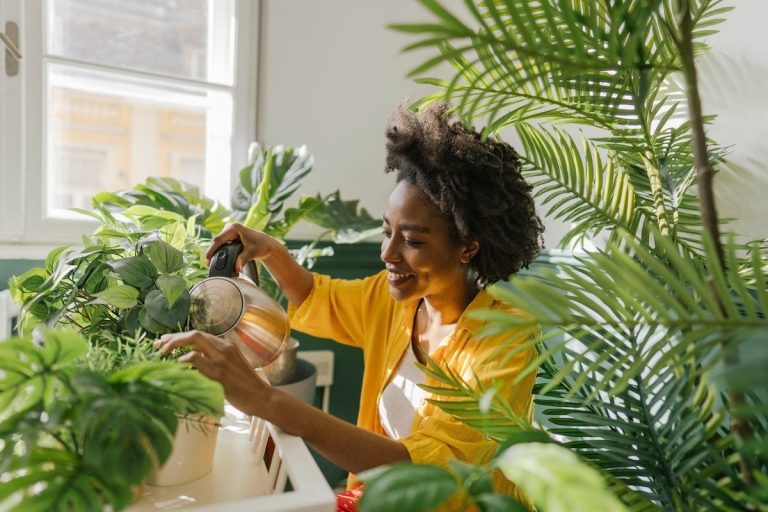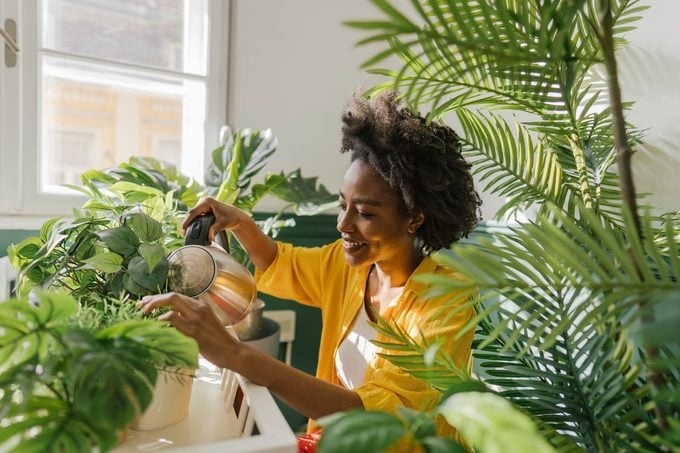 Aleksandar Nakic/Getty Images
Aleksandar Nakic/Getty Images
Growing houseplants has become increasingly popular in recent years. According to civicscience.com, 66% of U.S. consumers own at least one houseplant. With so many people growing houseplants, there's always something to learn, and readers are sharing their best plant hacks for indoor gardening.
Use ice to water your houseplants
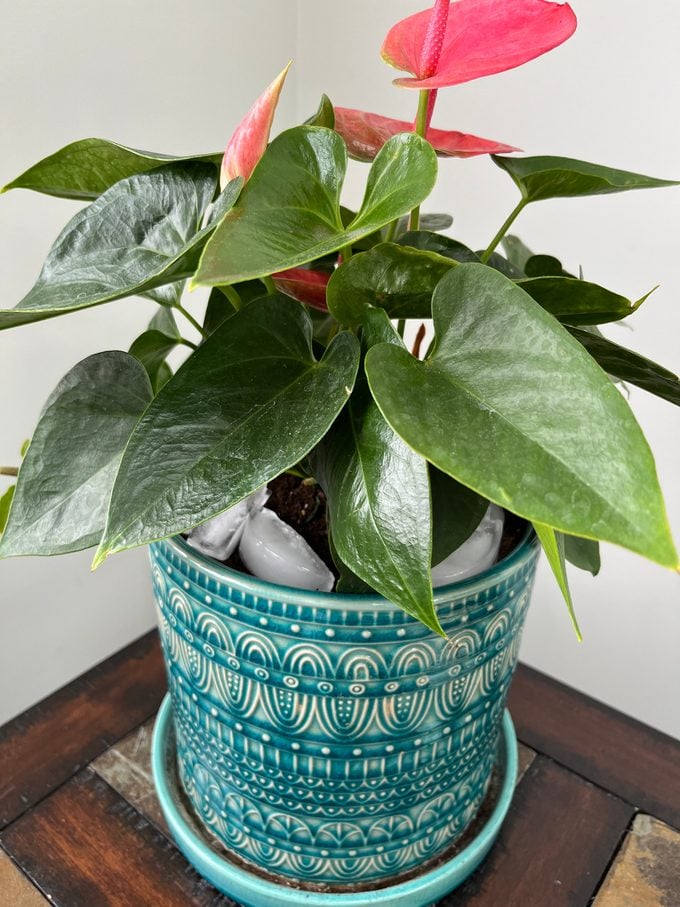 Jaclyn Vernace/Getty ImagesThe ice melts slowly, allowing the soil to soak up water.
Jaclyn Vernace/Getty ImagesThe ice melts slowly, allowing the soil to soak up water.
Proper watering is an essential part of knowing how to care for indoor plants. To prevent your floors from becoming waterlogged, one Birds & Blooms reader shares her secret plant hack: “Put ice around your hanging plants,” says Roslyn Francis of Lodi, California. “As the ice melts, the soil absorbs the water and it stops dripping out the bottom of the pot.”
Reader Lisa Sherman of Carlsbad, California, also swears by this watering method: “When indoor potted plants dry out, place ice on top of the soil and slowly melt the ice to water the plant without flooding the pot,” she says. “It's easy, it's mess-free, and you're less likely to overwater this way.”
When is the best time to water your plants?
Arrange your plants in a creative way
Some plants need direct sunlight, some prefer full shade, and some prefer both. One way to give all your plants what they need is to creatively place a piece of furniture, such as a long sofa table, in front of a window.
Reader Hope Kate from Wilmington, North Carolina explains: “I have a long sofa table positioned so that half of it is in front of a south-facing window,” she says. “I keep lots of light-loving plants in the area in front of the window, but the other half of the table is in the shade, so I can have lots of plants in one spot and they're all thriving.”
These are the best houseplants for low light.
Find a second use for your coffee grounds
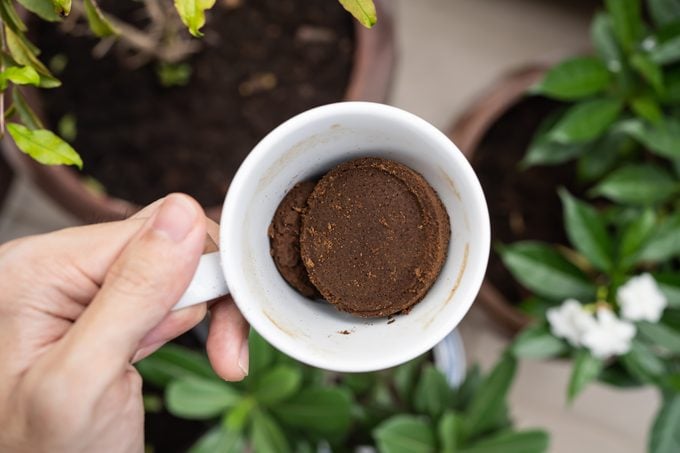 Wachiwit/Getty Images Save your leftover coffee grounds for your houseplants.
Wachiwit/Getty Images Save your leftover coffee grounds for your houseplants.
Once your daily coffee grounds have cooled, don't toss them in the trash. “Sprinkle some coffee grounds on your houseplants to help them thrive,” says reader Dolores Korando of Pelican Rapids, Minnesota.
Here are some ways you can use baking soda in your yard or garden.
Buy a moisture meter
It can be hard to tell when your plants need water. Instead of testing your houseplant's soil with your fingers or guessing when to water, you can use a moisture meter. “Use a soil moisture meter to avoid overwatering. It will tell you if the soil is moist, wet, or dry,” says reader Tracy McCollum of Joliet, Illinois.
Can I reuse the potting soil from my planter?
Rotate plants to ensure even exposure to sunlight
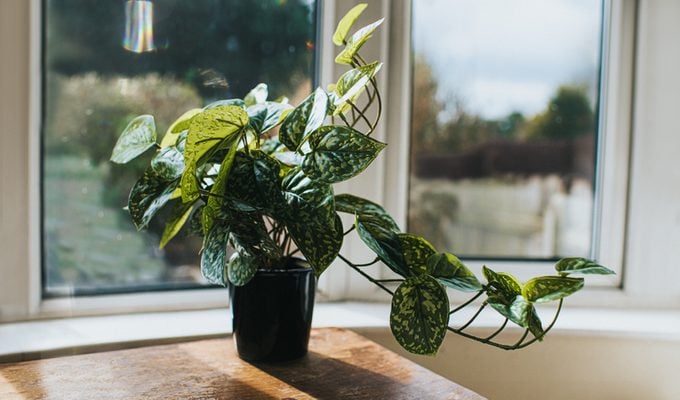 Katherine Falls Commercial/Getty ImagesRotate your plants weekly
Katherine Falls Commercial/Getty ImagesRotate your plants weekly
If you notice that your houseplant is leaning towards the light, try this super easy trick: Rotate your houseplant every now and then to keep it symmetrical. You can also rotate it every time you water it so you don't forget.
“Quarter-turn your plants once a week to ensure even sun exposure. This helps the plants grow evenly,” says reader Judy Roberts of Greytown, Ohio.
These 10 houseplants are perfect for beginners.
Watering plants with rainwater
Nothing beats fresh air and fresh water, and that goes for houseplants, too. “If they're small enough to carry around, expose them to a light rain when it's warm,” says reader Robin Moeller of Sylvania, Ohio. “I've never met a houseplant that didn't do well with a little rain.”
Reader Sharon Woodworth of Georgetown, Kentucky, agrees. “Collect rainwater and use it for your houseplants. I've been doing it for years!” she says.
Before you buy your next houseplant, make sure it's not on your list of houseplants you'll regret.
Use the “10-10-10” fertilizer rule
Most houseplants do well with a balanced fertilizer (10-10-10). Limit or stop fertilizing indoor houseplants in the winter and begin fertilizing again in the spring. As always, follow the specific package directions.
This is why the leaves of your indoor plants turn yellow.
Choose small plants for small spaces
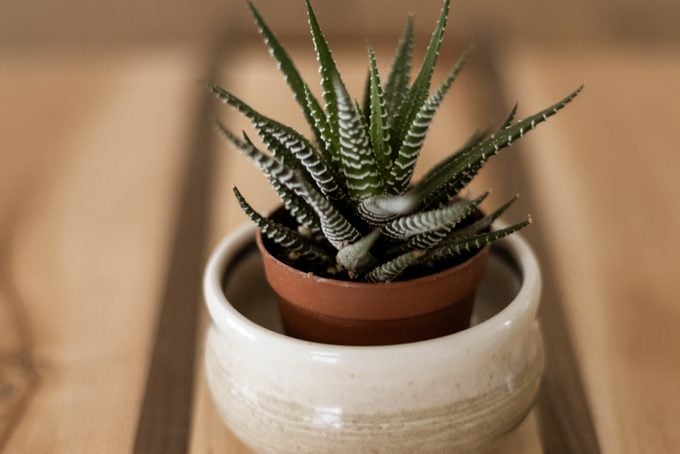 Tim M Lanthier/Getty Images Tiny Haworthia succulents can fit into even the smallest of spaces.
Tim M Lanthier/Getty Images Tiny Haworthia succulents can fit into even the smallest of spaces.
If space is limited, most 3-inch pots will fit into even the narrowest window frames. Peperomia and small cacti and succulents will both grow comfortably in containers of this size.
Use artificial grow lights correctly
If you use artificial lighting, the tips of your plants should be 6 to 12 inches away from the light source to ensure your plants get the most benefit.
Increase humidity for tropical plants
The ideal humidity level for tropical houseplants is around 50%. If your home is drier, place your houseplant on a tray of gravel filled with water.
Eradicate mold
“I read that sprinkling cinnamon on the soil helps prevent powdery mildew, so I tried it and it worked!” says reader Janine Buettner of Kalispell, Montana. She adds, “I don't have to deal with it anymore!”
Eggs for nutrition
Reader Sandy Lewis of Akron, Ohio, waters her houseplants with water that's had boiled eggs in it. She says this plant hack “works better for me than any commercial fertilizer.”
Next, find other ways to use egg shells in your garden.
Additional reporting by Eva Monheim
source
Why trust us?
A trusted media brand, Birds & Blooms has been inspiring readers to develop a lifelong love of birding, gardening and nature for nearly 30 years. We're the #1 bird & garden magazine in North America and the online resource for over 15 million outdoor enthusiasts each year. Our library features thousands of informative articles and how-tos, written by trusted journalists and fact-checked for accuracy by bird & garden experts. In addition to staffing experienced gardeners and birdwatchers, we also employ people with years of education and hands-on experience in birding, bird feeding, gardening, butterflies, insects and more. Learn more about Birds & Blooms, our Field Editor program and submission guidelines.

